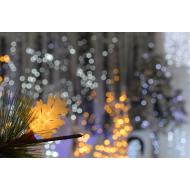The energy consumed by the load (one or more LED modules, for example), is always less than the energy consumed in the network because any driver causes losses inside that convert to heat. The goal of any designer or manufacturer of control gears is to minimise that energy loss, i.e. get as close to 100% efficiency as possible. Besides its common benefits, as a general rule, the more efficient a driver the less it heats up, thus the equipment works more safely once it is installed.
An LED control gear works by converting AC power to DC power in the outlet, thus we are talking about AC/DC converters. In addition to an EMI filter and bridge rectifier inside it, there may be one or several intermediate stages that gradually transform the power to meet our requirements at any moment in time to achieve the desired functions and characteristics of our driver. These include, for example, power factor, low THD, etc. The basic preliminary outline of a control gear at one stage could look like the following:
Depending on the number of intermediate stages of a control gear, we can classify them into single or multi-stage drivers.
1. Single-Stage converters (suitable for low power levels). This type of control gear uses only one power stage converter. Equipment based on Flyback technology with two coupled windings would be an example. In one cycle the winding is charged with power, and in the other one the winding discharges in the secondary, delivering power to the load and recharging the output capacitors, thus maintaining constant voltage and current.
The coupling between these two windings is essential to determining the type of power source isolation:
- ISOLATED: When there is galvanic and electrical separation between the primary circuits or mains input and secondary or load output.
- INDEPENDENT use: When, in addition to the isolation, there is double protection between the person and any accessible live part of the equipment.
- CLASS II: When, moreover, there is double protection between primary and secondary and between these and the exterior.
- Safety Extra Low Voltage (SELV): in the event of complying with the aforementioned requirements, as well as others concerning voltage values at the output and its ripple.
As Flyback only has a single stage, the amount of power delivered to the load depends on the amount of input power (power voltage). This equipment normally has a bigger ripple, though if this does not exceed 30%, behaviour is considered to be good and may be offset with output filters, which are ultimately capacitors.
Owing to the fact that the stage gradually adapts itself, and in accordance with the mains input values, the power factor of this type of equipment is normally good and the total harmonic distortion (THD) low,
Because of the load that the filter capacitors accumulate in the output, false contacts are hazardous to LED modules. If they are loaded, the peak current through the LEDs can cause them to break. That is why there are protection systems such as current limitation devices.
2. Intermediary stage converters (suitable for high and very high power levels). These types of control gears use several stages to gradually adapt the power to the most suitable characteristics in order to achieve good efficiency and high performance. Normally, there is a first stage to actively correct the power factor, in addition to generating a continuous voltage bus that supplies the Flyback. In this way, the power factor is extremely high, the THD can be controlled and made as low as possible and we can closely monitor efficiency. With this type of control gear the Flyback has a constant supply and therefore output parameters are constant (in any case less than 2% variation).
To significantly improve efficiency, a good idea is to use a semi-resonant stage like the quasi-resonant Flyback. This topology is very similar to the normal Flyback, but avoids unnecessary losses by switching at the same time as the winding is left without power. This way the free oscillation causing the classic Flyback disappears, eliminating the losses produced by it and improving efficiency. Efficiencies of over 90% can be achieved.
A control gear must be capable of withstanding abnormal operating situations without damaging the equipment. Some of these are:
Control gears based on topologies that isolate the output from the input are more robust and resilient when subjected to various tests of strength or electrical shock, though they do pose a technical challenge and require deeper knowledge of the state of the art than is required for non-isolated topologies, such as the BUCK type.
Iván Cid, R&D Department









